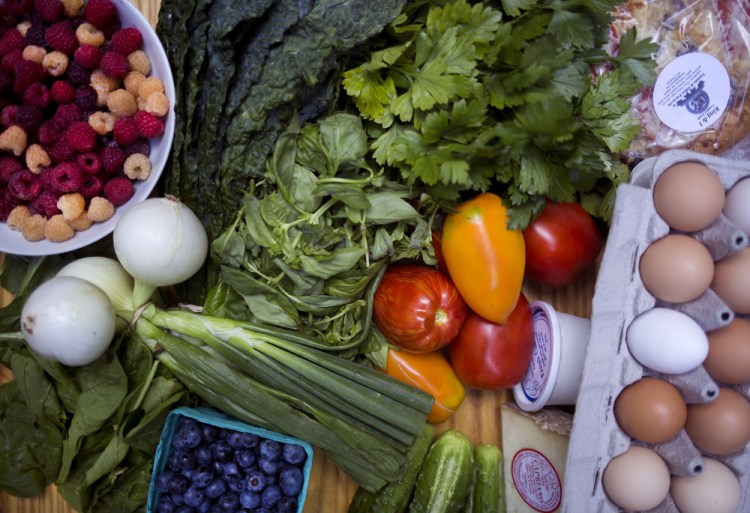Farmers market wooden tokens and portable point of sale systems have wreaked havoc on my already challenged sense of staying inside the lines of my food budget. As the market stalls overflow with gorgeous summer produce, I want it all. Each type of slicing tomato; every bouquet of herbs; all the lovely heads of lettuce; yellow, green and purple beans; peak of summer corn; experimental melons; bright berries by the quart; radishes and baby turnips in all sizes; and chili peppers running up and down the Scoville scale.
You see my problem? As recently as five years ago, I was kept in check by the cash in my wallet, as credit cards were useless at farmers markets. But electronic payment systems have enabled my eyes to become bigger than my family’s collective stomach on any given market day.
Rather than heeding my husband’s fiscal warnings to buy only what we can eat until the next market day, I have developed four kitchen behaviors to make sure that none of the extraneous produce that lands here goes to waste.
Firstly, take the time on market day to prep produce for longer-term storage. Herbs look artfully trendy sitting in a mason jar on the counter. But they will last much longer if you wrap them loosely in a clean flour-sack towel and store them, labeled (I keep masking tape and a Sharpie on the kitchen counter) in the very front of the vegetable crisper. Don’t wash the herbs until just before you want to use them, as water will hurry decomposition.
Lovely lettuces should get washed, torn into pieces and twirled in the salad spinner before they, too, are wrapped and stored, for easy salad pickings.
For heartier greens like kale and chard and edible leaves that come attached to any root vegetables, it’s best to remove the leaves from their stems in bite-sized pieces (save the stems for green smoothies or to be chopped and sautéed). Wash and spin them dry and place them front and center in the refrigerator so that every time you open the door, your mind registers the sub-conscious message of “USE ME”!
That subliminal message brings me to breakfast, my second secret weapon for using up produce. Berries, breads and eggs are obvious morning mealtime items. But you can also train yourself to use any kind of market bounty for breakfast. I started by grating surplus tomatoes on toast for my daughter and graduated to greens sautéed in reserved bacon grease sitting under my fried egg and/or next to my toast, another easy way to routinely green up breakfast. If I’m cooking to impress overnight guests with little effort, a savory Dutch baby (see recipe) gets herbs and greens into eaters early in the day.
Thirdly, I make sure eggplant, bell peppers, summer squash and zucchini get eaten throughout the week by grilling them en masse on market day. Firing up the grill just once conserves energy, and having the vegetables already cooked means they can easily be included in lunchtime sandwiches and quick dinners.
And finally, I put up a few jars of something. For many people, preserving the summer bounty conjures up long, hot days in a steamy kitchen preserving gobs of stuff. But it simply doesn’t have to be that big of a production. Three jars of pickled beets or dilly beans takes fewer than 45 minutes to pull off and are just as welcome on a gray February day as any big batch jar would be.
CHRISTINE BURNS RUDALEVIGE is a food writer, a recipe developer and tester, and a cooking teacher in Brunswick. Contact her at: cburn1227@gmail.com.
Send questions/comments to the editors.



